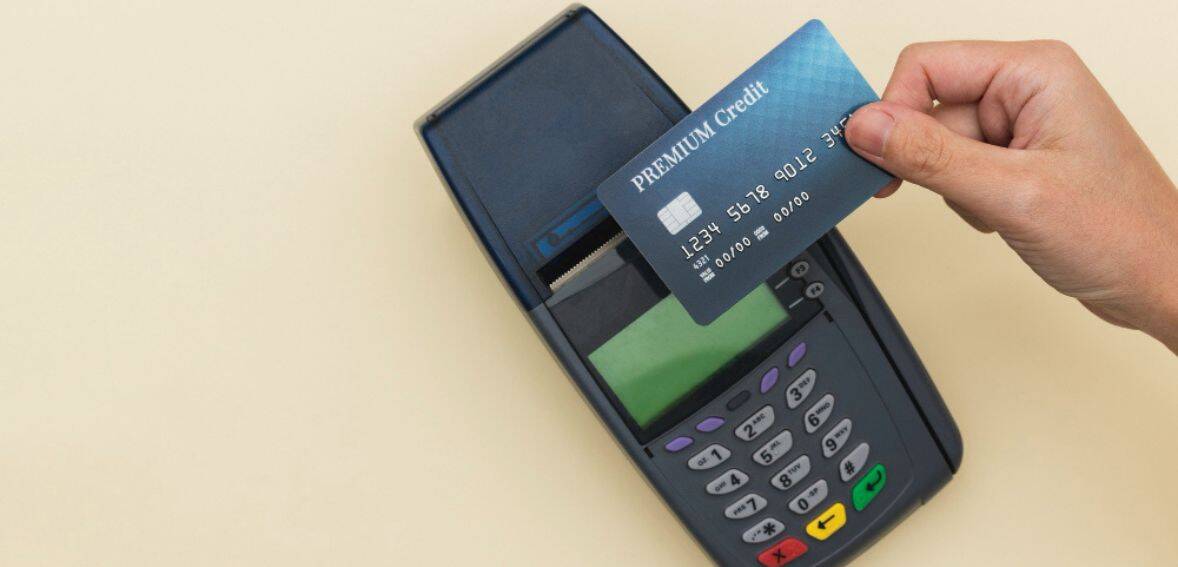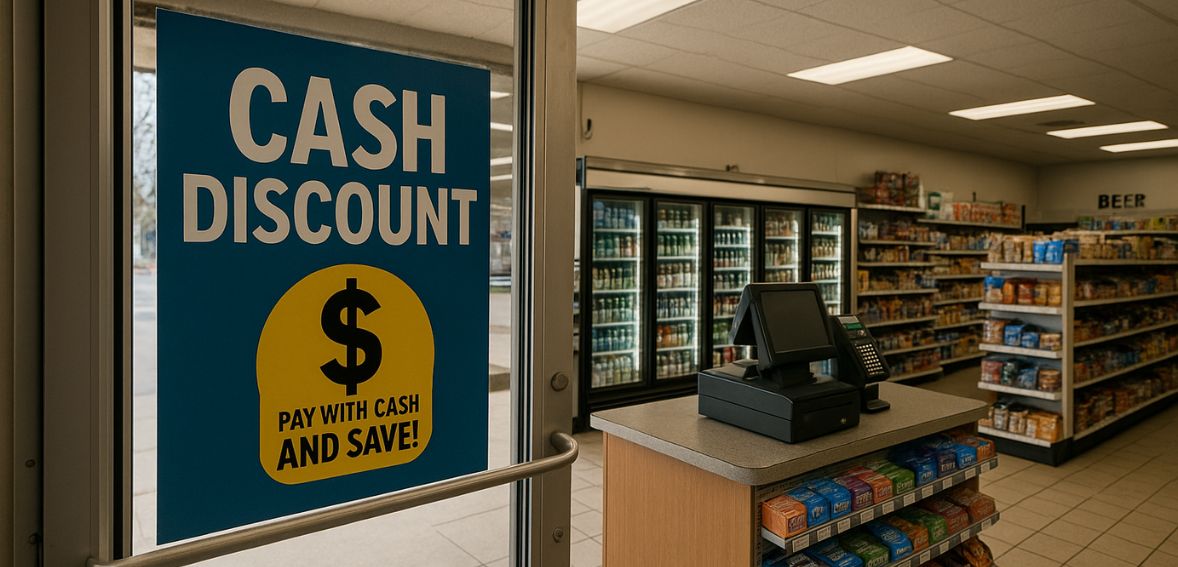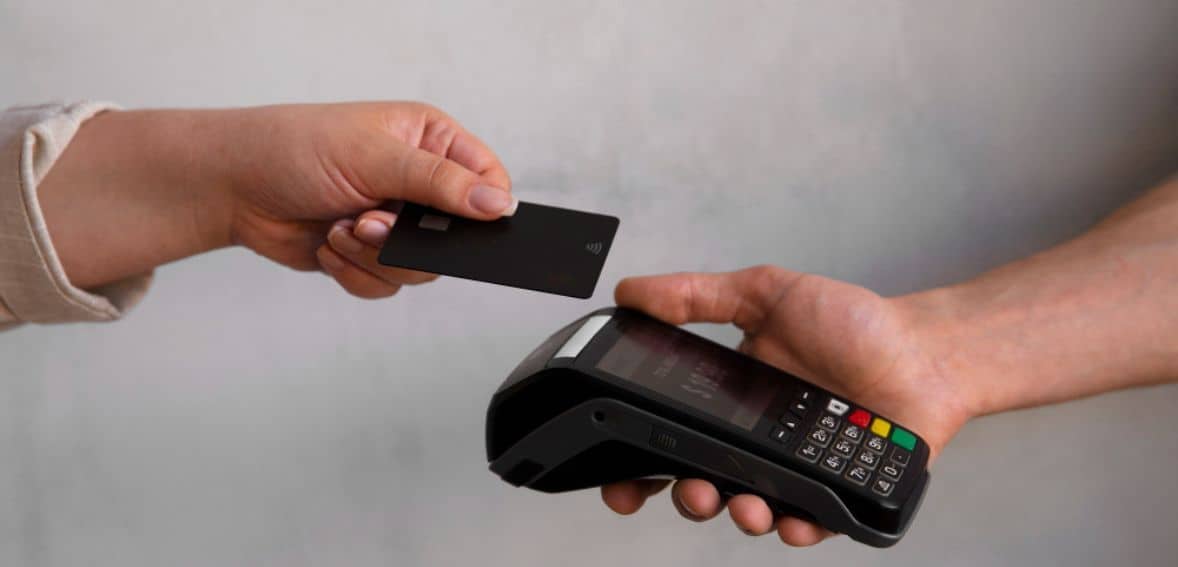
By Jack Black September 23, 2025
Selecting between surcharging and cash discounting can assist companies with credit card processing fees, but both methods function differently. Surcharging transfers costs to card users, whereas cash discounting incentivizes customers to pay cash.
Knowing the advantages, pitfalls, and legal guidelines of each method is essential for selecting the appropriate strategy for your company and making your customers pleased.
What Is a Credit Card Surcharge

A credit card surcharge is an additional charge on a customer’s bill when they opt to pay using a credit card. It is designed to assist businesses in paying for card payment processing costs. A surcharge is typically a small fraction of the whole purchase, typically 4% or less, and is only applicable on credit card purchases—not on debit or prepaid cards.
Customers are always notified ahead of time, and the charge is prominently displayed on the receipt so that everything is easy and transparent for both parties.
How Do You Calculate Surcharges?
Calculating a credit card surcharge is easy if you do a few simple things. First, determine your processing fees. These are the amount you pay to accept payment for credit cards, typically between 1.3% and 3.5% of the transaction. Then determine your surcharge rate. The surcharge cannot be more than your processing fees and is typically limited to 4%, although that differs accounting to card brand and local regulations.
Compliance and Legality
Before charging a credit card surcharge, you should be aware of the rules that govern it. Surcharges can be charged in most states but not all, so you’ll have to look up your state laws first. Card brands such as Visa and Mastercard also need you to register before charging the fee.
In addition, you are required to clearly notify consumers by making a notice at the time of checkout or on the website so that they are aware of the surcharge prior to payment. These procedures keep your business in compliance and ensure trust with consumers.
Use Case and Business Types
Surcharging is most effective for companies with high volumes of credit card transactions, particularly where the transactions are high. Here, processing fees can eat into profits, which makes it an attractive choice for B2B businesses, professional service firms, and high-value product stores.
By charging a small surcharge, these firms can safeguard profit margins without hiking general prices for everything. This way, only the consumers who opt for a credit card are responsible for the additional expense.
Pros and Cons
Implementing a credit card surcharge is a clever step for companies, particularly those operating on thin profit margins or receiving many card transactions. It allows you to transfer the processing fee onto the consumer, safeguarding your profitability without affecting your base price.
The advantage is very obvious—it pays for your transaction fees, maintains straightforward listed prices, and is simple to administer with the appropriate tools.
However, there are also disadvantages. Surcharges are prohibited in some states, so you must review the regulations first. Also there are some customers who may view it as a penalty for card use, which would harm loyalty.
State-Specific Laws
State Category | States | Notable Requirements |
Prohibited States | Connecticut, Maine, Massachusetts, New York | No credit card surcharges allowed |
Restricted States | Colorado, New Jersey, Nevada | Surcharges cannot exceed processing costs |
Upcoming Changes | California | Surcharge ban starts July 1, 2024 |
What Kind of Cards can Surcharges be Added to?

Merchants can generally add surcharges to most credit cards, including the major ones like Visa, Mastercard, Discover, and American Express. Certain credit cards, such as reward cards, pay a higher processing fee because of which retailers charge a marginally higher surcharge on these. Remember that card networks or your state laws often demand that you surcharge all credit cards equally.
Getting Started With a Credit Card Surcharge Program
Starting a credit card surcharge program starts with knowing the rules. Begin by checking if surcharges are permitted in your state and that you comply with card network rules. Big brands such as Visa and Mastercard tend to require registration and compliance with certain fee caps.
Then, install the necessary signs at your checkout area and also ensure that the receipts indicate the surcharge very clearly. Collaborate with a payment processor to manage compliance and implement the program in your point-of-sale or invoicing software. It is possible to begin surcharging almost immediately with proper assistance, without interfering with your normal operations.
What Is a Cash Discount Program
A cash discount plan is a method where companies provide incentives to customers paying in cash, check, or ACH, instead of credit cards. If a customer pays cash or some other non-card method, they get a slight discount upon checkout.
This assists the company in saving on card processing charges while providing the consumer with a small advantage. It’s a win-win strategy for both parties—companies save money, and customers pay less by opting for cash.
Compliance and Legality
Cash discount programs tend to be easier to implement from a legal perspective, but companies still have to be clear and consistent. The best part is that they’re legal in all 50 states as long as they’re implemented correctly.
Merchants simply need to ensure pricing is clear and that shoppers understand precisely how the discount applies. Signs at checkout and advance notice prevent confusion and ensure compliance.
Use Case and Business Types
Cash discounting is well-suited to the business where most customers prefer paying cash in every situation. It’s frequently applied to quick-service restaurants, gas stations, and specialty retail stores. This practice works well because it aligns with customer behavior and assists businesses in saving on fees.
Whereas surcharges are perceived as negative, a cash discount is more likely to be viewed positively—it is often perceived as a reward for paying in cash and contributes a lot to customer loyalty.
Pros and Cons
A cash discount program does something different by offering a break to customers when they pay with cash, check, or ACH, but not a credit card. Instead of charging a fee, companies incorporate processing fees into the prices that they advertise and then provide an advertised discount at the register for payments other than cards.
The advantages are considerable—allowed in all 50 states, simpler to remain compliant, reduces processing fees, and customers tend to view it as a benefit. However, it does take tweaking your pricing model and training employees. Unless it is clearly explained, it may mislead customers and generate uncertainty.
Getting Started With a Cash Discount Program

Cash discounting is a payment method where businesses give customers a small discount if they pay with cash instead of a credit or debit card. The idea is simple: card payments come with processing fees that the business must pay, but cash payments don’t. By offering a discount for cash, businesses save on those fees while customers enjoy a lower price. It is legal everywhere to do this, but always be transparent and clear.
To implement it, price your products accordingly to absorb card charges, prominently post the cash discount at the checkout, and ensure your employees can explain it with confidence. Train staff to respond to inquiries routinely and employ compliant software to automatically deduct the discount on transactions.
Cash Discount vs Surcharge
Aspect | Cash Discount | Surcharge |
Processing Fees | Lowers fees by encouraging cash payments | Shifts fees directly to card users |
Legal Status | Allowed in all 50 states | Restricted or banned in some states |
Customer Perception | Generally positive due to savings | May result in negative reactions |
Implementation | Moderately complex | More complex due to regulations |
Cash Flow | Immediate access to funds | Standard processing times |
Cost to Business | Reflects previously discussed fee changes | Reflects previously discussed fee changes |
Customer Response Patterns

Research indicates that customers respond in different ways to cash discount and surcharge programs, understanding these patterns can assist businesses in selecting the best method.
With a cash discount scheme, most customers value the chance to secure a discount on the services. Budget conscious shoppers are particularly drawn to companies offering discounts.
However, there are also some customers who find the pricing somewhat confusing, and let’s not forget the necessity to deal with more cash requires companies to take additional security measures.
For a surcharge plan, users of cards tend to resent the additional charges as a penalty. A few companies observe a decrease in sales upon introducing surcharges, and regular customers may even change to another company to escape the charge.
Customer acceptance depends on several factors like the nature of the business, the size of transactions, local payment practices, and competitor strategy. For instance, places where cash is more commonly used handle cash discounts more easily, but bigger purchases might make fees more noticeable.
Describing the savings with a cash discount and being upfront about surcharges will get customers to notice and embrace the program, which will serve your business better.
Cash Discount and Surcharge Programs Aren't for Every Business

Cash discount and surcharge programs can be effective, but they’re not necessarily the right solution for every business. First of all, most customers prefer to pay with credit cards because it’s easy and convenient.
In certain instances, it can even be perceived as a penalty on non-cash customers, so you or your employees might have to take extra time to explain how the program is structured.
Surcharges can also frustrate consumers who object to paying additional fees and potentially walk away from the sale. On the other side, handling more cash also creates extra work—employees need to manage change, make deposits, and be cautious about security risks like theft or loss.
On top of that, customers often spend more when they use cards compared to cash, so shifting payments could reduce overall sales. Finally, keep in mind that surcharges aren’t legal everywhere. Some states have strict rules, so you’ll need to check your local laws before starting one of these programs.
Alternative: Incorporate Fees Directly into Your Prices
Alternatively, you can avoid using a cash discount or surcharge program by building the processing fees directly into your prices. By adding a bit to the price of everything, you can absorb credit card fees regardless of how customers pay.
To determine the appropriate adjustment, analyze your business’s credit card and cash transaction data. Compare the average amounts of the transactions and determine a modest increase that levels out the charges.
Most customers won’t notice at all, and if they do, it’s simple to justify the fact that it helps to keep your prices consistent and your business operating efficiently. Pay attention to your sales data and tweak accordingly to discover the method that best fits your business.
How to Choose The Best Choice for Your Business
Deciding between a cash discount program policy and a credit card surcharge isn’t necessarily easy. There are a lot of things to consider, and what is best for one business may not be the same for another. It can be helpful to observe what your competition is doing.
Are they surcharging, putting minimums on credit card usage, increasing prices, or not doing anything at all? Knowing the market can inform you of what may be best for your business.
Navigating the Future of Payment Processing
Both cash discount programs and credit card surcharges are handy methods for businesses to deal with card processing costs. Surcharges allow you to pass processing charges on to card-paying customers directly, and cash discounts prompt customers to pay in cash for a minimal gain.
Both strategies have their own rules, advantages, and disadvantages, so it’s worth selecting the one that suits your business. Payment processing continues to grow with new regulations and technology. Customers are more informed than ever about fees, so making charges clear and transparent is most important.
Conclusion
Both surcharging and cash discounting represent good solutions to control credit card processing fees. Surcharging suits merchants that wish to pass the fees on to cardholders directly, and cash discounts offer a small discount to customers upon making a payment by cash.
The correct solution depends on your business model, customer usage, and regional regulations. Straightforward communication and correct implementation are keys to success.
FAQs
What is a credit card surcharge?
A credit card surcharge is an additional fee charged to a customer on top of their total to compensate for the cost of card payment processing.
What is a cash discount program?
A cash discount program provides a discounted price to customers who pay by cash, check, or ACH rather than credit cards.
Are surcharges legal in all states?
No, surcharges are permitted in most states but are restricted in some states, so review local laws prior to implementation.
Can I provide surcharges and cash discounts?
Yes, as long as you disclose clearly and follow state laws and card network requirements to prevent penalties.
How do I determine a surcharge?
Surcharges are typically derived from processing fees, generally at 3–4% of the transaction, and must be applied consistently.
Leave a Reply